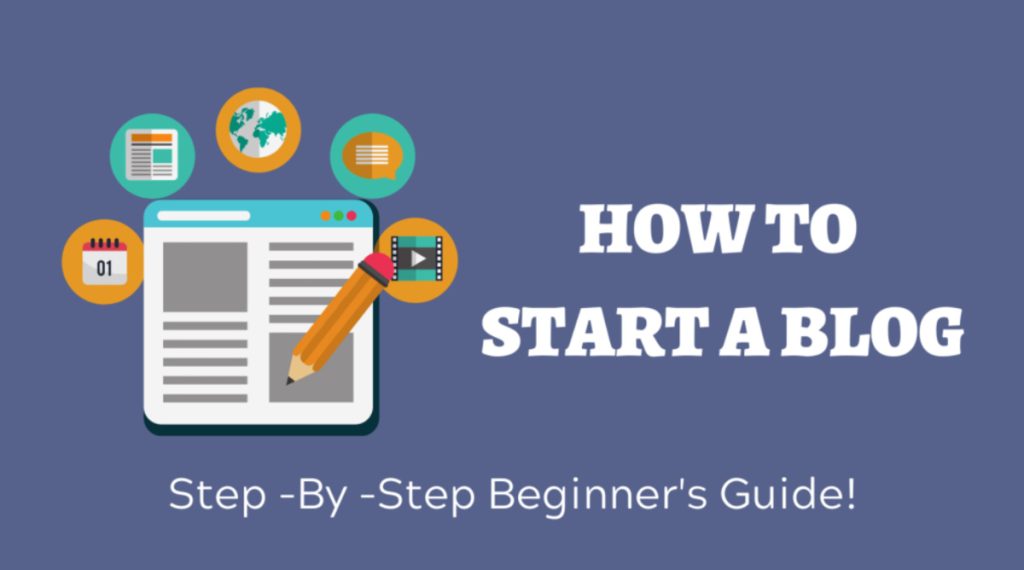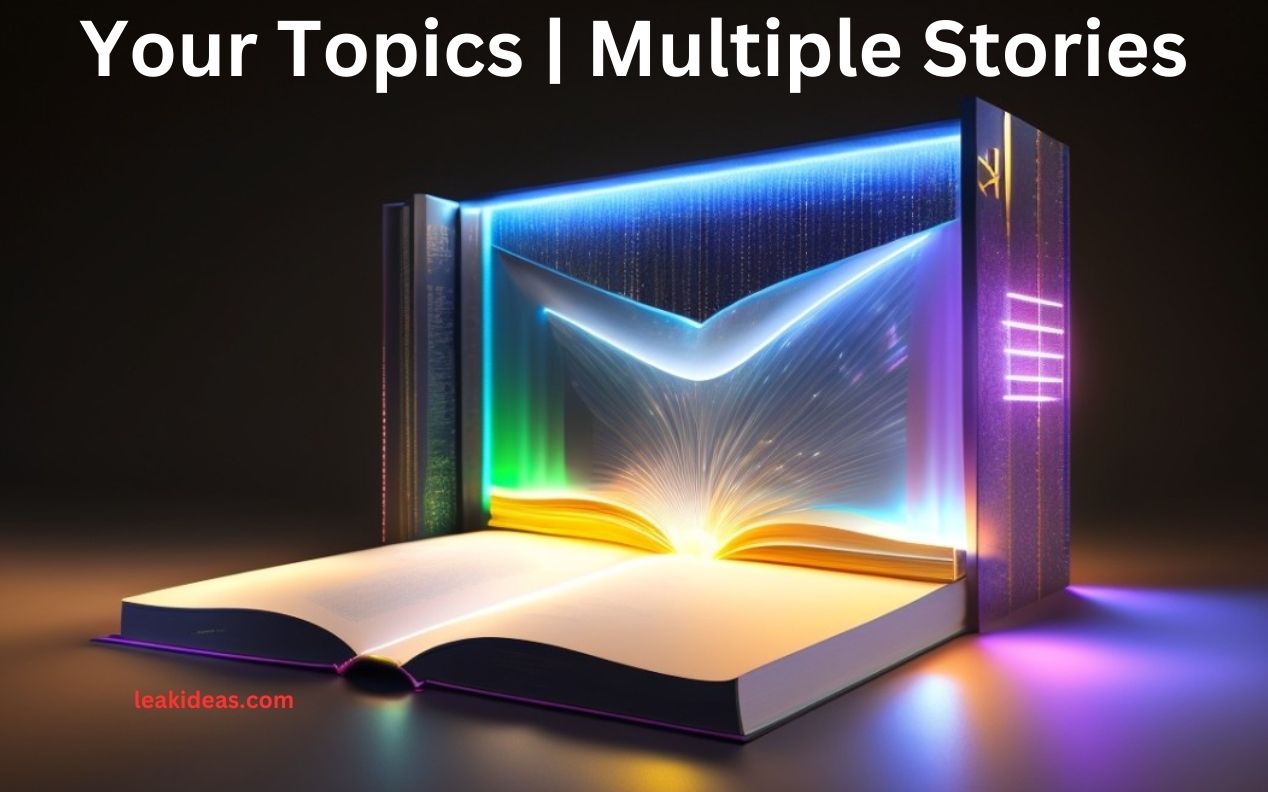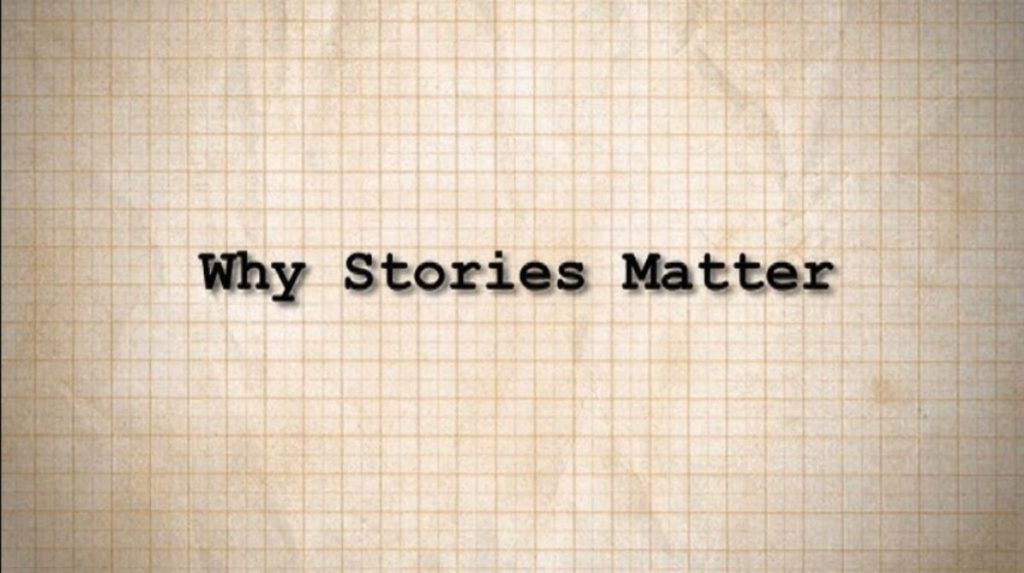Power of Your Topics | More Than One Story
Why Stories Matter in Content
Imagine reading a technical manual versus hearing a story about someone’s personal experience with the same topic. Which one stays in your mind? Stories resonate through emotions, making the content stick and memorable. In research, it was proven that people are 22 times more likely to remember a fact when it forms part of a story. The stories you weave from your topics will create that connection that resonates with your audience.
Need for Diversities in Subjects and Varied Story Lines
The modern audience wants variety. One-size-fits-all content no longer cuts it. Having several stories under different topics will help you reach a broader audience and satisfy more varied interests and needs. Take the blog on healthy living as an example: the stories would range from weight loss journeys to breakthroughs in mental health and nutrition tips. Addressing the various angles of the topic showcases that you have really gotten into the subject matter, which will keep your readers hooked.
Establishing Expectations for This Resource
In this guide, we’ll explore how to master the art of storytelling by pairing your topics with multiple stories. You’ll learn how to:
- Rich and varied themes.
- Integrate personal anecdotes to humanize your content.
- Real-life examples will always boost your credibility.
- Write in a way that resonates with your audience.
Get ready to unleash the storytelling force for your content to be seen and remembered.
Why Multiple Narratives Combine Well for Engagement
It is not easy to hold or even grab your audience’s attention in today’s fast-paced digital landscape. Combining multiple stories into your content is a very effective strategy to increase engagement. It is not about telling tales but creating relatable, diverse narratives that speak to the hearts and minds of your audience. Let’s dive in on why this works so well.
The Psychological Effects of Stories
Stories work as great connectors since they make us feel. During a story, our brains start releasing oxytocin in order to create the trust and empathy needed on that very spot, and that is why personal anecdotes and true-life scenarios resonate more than dry facts or data.
For example, consider the use of personal stories of people whose lives have been impacted by donations by nonprofits. Such stories tug emotionally, making people act. A number of stories combined will have multiplied the effect because it allows multiple perspectives, and by that, at least one of them resonates strongly with each audience member.
How Diversity Topics Catch Broad Audiences
Variety is spice to life, and for the sake of narrating, the same may be said. You cater to a wide audience if you mix different topics and narratives. While some may like inspirational stories, some may have an affinity for humor or practical insights.
A travel blog that would be discovered:
- The story of the solitary backpacker gaining self-confidence in the Swiss Alps.
- A wacky family adventure on a tropical beach vacation.
- A couple’s romantic getaway in Italy.
The various stories ensure that everyone has a choice, thereby making the content more inclusive and engaging.
Success on Platforms Like Instagram – Especially via Examples of Storytelling
Instagram is the storytelling hotspot. The brand is very much like Humans of New York, which thrives on creating various, real-life stories through everyday people. Each post is different, yet, put together they create that all-important tapestry of human experience and resonate with millions around the world.
The other example could be fitness influencers who transform journeys—not only theirs but also those of all followers. The multiple stories create trust and authenticity as well as promote a community.

Find Your Subjects: Pick Stories That Interest You
The way to combine them into one topic could efficiently result in choosing a story that deals with your audience’s interest. Choosing the right topics will make your content relevant, relatable, and impactful. Here’s how to identify and develop those stories:
Understand People’s Interests and Needs
The preferences of your audience should be the base of your storytelling strategy. Ask yourself:
- What challenges do they face?
- What expectations do they have?
- What do they want in your niche?
Thus, a fitness coach might determine that their target audience is concerned with workout plateaus or meal prep for busy schedules. Meeting those specific needs positions you as a useful resource.
Engage with your audience through surveys, polls, or direct conversations on social media. Keep track of comments, reviews, and frequently asked questions to know what they really care about.
Aligning Your Topics to Your Business or Platform Goals
Your tales must be interesting yet also serve in the interest of your broader goals. For instance:
- A lifestyle brand might share experiences where customers are redesigning homes through its products.
- A non-profit can often illustrate several stories of lives impacted through their programs.
Stories will align with your goals by strengthening your brand identity while meeting audience expectations.
Tools and Strategies for Idea Generation
Generating ideas for your topics can be so overwhelming, but with the right tools, it’s manageable:
- Social listening tools – BuzzSumo or Brandwatch can help one identify trending topics in your niche.
- Google Trends – See who cares about what and tailor the content to achieve that.
- Content Gap Analysis – Compare your offerings with competitors to uncover untapped areas.
Keep an active list of ideas that reflect the needs of your audience but still fit within your brand voice.
Please Read Pedrovazpaulo Business Consultant.

Becoming the Art of Effective Storytelling
Storytelling is even more powerful if done in ways skilled and intentional. Good stories talk about vision, interest, and lucidity.
How to Approach Storytelling with Multiple Perspectives
Different views make a richer story. For example:
- Through travel blogs, solo adventurers, family, and couples may share their stories.
- A technology brand can use customer success stories and words from some employees.
The approach makes your content more relatable and broadens your appeal.
Balancing Informative and Engaging Content
Informative content is valuable; engaging content keeps readers hooked. Balancing the two is:
- Tale-telling to invoke or support a point.
- Keeping the language simple, and conversational.
- Including actionable takeaways, your audience can immediately apply.
Some of the Effective Storytelling Techniques
- Hero’s Journey – Illustrate change, for example, assisting someone to overcome problems with your product.
- Relatable Scenarios – Content that portrays your audience’s real-life experiences.
- Surprising Twists – Incorporate unexpected elements to keep readers intrigued.
Those multiple narratives will surely weave themselves together perfectly in your content with all these strategies.
Using Multiple Stories in Your Blog with Them Together
Writing blog posts that could combine your topics and multiple stories requires an artistic structure and an interesting delivery. An effectively structured blog not only attracts readers but also keeps them hooked from start to finish. Here’s a step-by-step guide to creating content that’s dynamic and impactful.

How to Structure Your Blog Content Step-by-Step
The foundation of any great blog post lies in its structure. Start with an engaging introduction that sets the stage for what’s to come. Clearly outline the main topics you’ll cover and hint at the stories you’ll share. This gives readers a reason to continue reading.
Next, divide your content into sections, each dedicated to a specific topic or story. Transition smoothly between these sections to ensure the narrative flows naturally. For instance, if you’re writing about overcoming challenges, introduce one story before moving to the next, showing how each is connected by the overarching theme.
Finally, conclude with a nutshell that brings together all the stories as a bonding element reinforcing all key takeaways and giving readers a sense of closure and inspiration.
Use Headings for Different Topics
Subheadings are essential for organizing your blog and making it reader-friendly. They act as signposts, guiding readers through your content. When you’re covering multiple stories under your topics, use subheadings to clearly differentiate each section.
For instance, if your blog is on personal development, you can use subheadings such as “From Fear to Confidence: Sarah’s Journey,” and “John’s Approach to Finding Balance.” Generally, such titles are not only informative but also intriguing, challenging the reader to dig deeper into each story.
Write your focus keyword naturally into subheadings as often as possible. This improves your blog’s SEO while making clear how topics and stories fit with themes.
Best Practices in Reader Retention
Strong storytelling with thought-out presentation balances people into keeping interest. Every story must begin with a hook to get the reader hooked on page one. Using sensory words and common experiences place them within the story.
Keep paragraphs short and conversational to be easier on the eyes. Mix images with quotes for an interesting text. Lastly, end with a takeaway or a reflection that would leave readers with an accomplishment when they consider having read through each of the stories.
Leveraging Their Social Media Platforms for Your Stories
Social media remains a great storytelling powerhouse with many options through which you can reach your audiences via your topics and multiple stories. Options include Instagram Facebook and more through which you share inspirational, educative, or entertaining narratives and personalize the approach to the platform to amplify engagement and expand the scope.
How to Share Stories on Instagram, Facebook and More
Every social media platform has its strengths in storytelling. Instagram thrives, for instance, through posting, Stories, and Reels in visual storytelling. You can share personal anecdotes, customer testimonials, or behind-the-scenes glimpses paired with great visuals to captivate your audience.
It can also accommodate long-form content and discussion. You can share a long story with images or videos that help create conversations and community. Video-based narratives are best suited for platforms like TikTok and YouTube, where you can engage your audience with dynamic, multi-layered stories.
Features Facilitating Improved Storytelling and Engagement
Social media platforms have some features that make storytelling even better. Instagram Stories and Highlights can share short stories that can be accessed later by other audiences. It also includes interactive features like polls and Q&A stickers, where the audience gets to engage.
Facebook Groups and Live Sessions Let you have a much more intimate connection with your audience through posting real-time updates or hosting storytelling events. Similarly, trending challenges on TikTok or YouTube Shorts can make the best instruments for weaving multiple stories into intuitive content.
Repurpose Your Blog Content as Social Media Posts
For strategic ways of giving extended life to your stories, repurpose your blog post into other social media posts. Take an extensive blog and then split it into smaller more digestible pieces. Then, your key points or anecdotes turn into an Instagram carousel or a series of short videos on TikTok.
You can share quotes or highlights from your blog as visually appealing text posts, while in-depth sections can be adapted for LinkedIn articles. That allows you to adapt and tailor your content, format, and audience preferences on each platform, keeping your stories fresh and accessible.
Tools and Technologies That Support Storytelling
Expansions from the role of technology in the digital age are tremendous. But, since innovations in platforms are considered, let alone having special apps, there are just too many tools to help craft and amplify the stories.
Storytelling Platforms, Apps, and Features to Try
Platforms such as Canva or Adobe Spark are great for creating engaging images and videos that help enhance your stories. Audio-related applications like Anchor will even allow you to share these stories in the form of podcasts, while platforms for detailed written stories are facilitated through tools like Medium.
Social media management tools like Hootsuite or Buffer can streamline content sharing across platforms, ensuring your stories reach the right audience at the right time. Additionally, live-streaming tools like StreamYard make it easy to host storytelling sessions across multiple channels simultaneously.
How Technology Can Expand Your Story’s Reach
Technology can also expand audiences beyond the immediate circles. More advanced analytics capabilities, even like Google Analytics or social media insights, help understand the resonating stories so that one can further fine-tune one’s approach.
AR and VR transform storytelling. Brands, like IKEA, enable their customers to see their products at home with AR’s help, which itself becomes an interactive narrative. With VR, audiences can go on experiential stories, thus making content memorable and engaging.
By using the appropriate platforms, tools, and technologies, you can create a story that will appeal to the audience and then let the stories extend beyond your wildest imaginations.

FAQs about Your Topics | Multiple Stories
Why use several stories in my content strategy?
Using a few stories lets me reach more people with how different lives are from a different standpoint, so engaging and having a better personal experience about what people do.
What are the appropriate topics I should cover with these stories?
Select topics that match your audience’s interests, your brand identity, and current trends. Diversification of subjects will be sure to keep your content fresh and relevant.
How do I craft a story with which the reader relates?
Authenticity through relatable characters and real-life experiences is the best approach. Use emotional appeal and structure your narratives in ways that will engage the reader’s attention until the final point.
How do I weave together stories in one blog post?
Use clear headings, transitions, and summaries to order each story. Each story needs to connect back to the central theme or message of your blog post.
Which are the platforms that can share multiple stories?
The platforms that really work well with visual and narrative storytelling are Instagram, Facebook, and LinkedIn. Blogs and podcasts are more suitable for exploring multiple stories in depth.
How will I know what my audience wants to read about?
Analyze feedback, surveys, and engagement metrics on your existing content. You can make use of tools like Google Analytics or social media insights to monitor which topics are garnering the most interest.
Do multiple stories benefit my SEO strategy?
Indeed, multiple stories do open up wider keyword utilization possibilities, enhance dwell time, and allow for opportunities of internal linking, thus benefiting SEO performance.
How do I put multiple stories into one blog post?
You use examples, anecdotes, or even case studies to make your case while keeping the flow logical in terms of coherence.
How to End/Transition Between Stories from the Same Blog Post?
You use transitional phrases that summarize the previous story and then lead to the next or conclude with a transitional conclusion to make it flow as smoothly as possible.
How long Should a Story in a blog post be?
Ideally, keep each story between 200 to 400 words. This keeps readers engaged and prevents your post from becoming overwhelming.
What are the benefits of storytelling for business content?
Storytelling humanizes your brand, builds trust, and makes your content memorable. It helps convey complex ideas in an engaging and relatable way.
Can I repurpose my blog stories for social media posts?
Absolutely! Break up key stories into smaller, bite-sized posts, reels, or carousels on platforms like Instagram and Facebook to reach a broader audience.
How do I develop an effective storytelling strategy?
Plan your content calendar around key themes. Make sure you’re bringing in different voices, real-life examples, and a consistent brand message to every story.
What tools can I use to create better storytelling content?
Tools like Canva for graphic works, StoryLab.ai for ideas on content creation, and platforms like Medium or Substack for your publications can complement your narrative.
How often can I blog with multiple stories to publish?
Consistency means that it can be weekly, or bi-weekly, as per the ability to write. Quality is more than quantity, so take your time and ensure whatever you publish has value.
Conclusion: Building a Sustainable Storytelling Strategy
Storytelling isn’t just an art; it’s a powerful tool for connecting with your audience, making them act, and doing what you want. If you focus on your topics | multiple stories, this will create a dynamic way of delivering your message but will also cater to varied interests and needs. Woven through blog posts and social media or other forms of digital media, ensuring that your content is remembered, engaging, and influential.
Final Tips for Consistent Engagement
Consistency is the hallmark of a sustainable storytelling strategy. Engage your audience consistently to understand their ever-changing interests and include them in your stories. Your content calendar should be planned on the balance of personal anecdotes, audience stories, and brand-driven narratives to maintain variety. Utilize tools and technology to track performance and refine your approach to ensure that each story will resonate with its intended audience.





